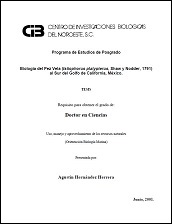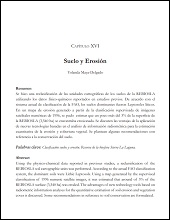Variabilidad temporal de la producción de praderas de zacate buffel (Cenchrus ciliaris L.) en regiones áridas
Temporal variability of production of buelgrass (Cenchrus ciliaris L.) pastures in arid lands
Abstract
"El establecimiento de praderas de zacate buffel (Cenchrus ciliaris L.) es una respuesta a la escasa disponibilidad de forraje en las regiones áridas. Estas regiones se caracterizan por la baja productividad y alta variabilidad temporal, factor que no suele incluirse en las estimaciones productivas de las praderas. El objetivo del presente estudio fue analizar el efecto de la variación interanual de la precipitación y el efecto de la edad de establecimiento de la pradera, en un modelo de estimación productiva. Se eligieron 12 praderas establecidas en los 1970s en la Región del Cabo, Baja California Sur, con precipitación promedio anual entre 100 y 450 mm. El modelo de estimación se baso en la relación producción - precipitación anual. La variación interanual de la precipitación se obtuvo de registros históricos de la estación meteorológica más próxima a cada pradera, el efecto del tiempo de establecimiento se incluyo con base en
la relación edad - productividad. Los resultados muestran que el efecto de la incorporación de la variabilidad temporal incrementa el valor de precipitación umbral necesario para tener producción positiva, disminuye de forma significativa la producción promedio estimada por pradera y aumenta la variabilidad geográfica de la misma." "The establishment of buffelgrass pastures (Cenchrus ciliaris L.) has been considered a solution to the scarce availability of forage in arid lands. However, these regions are not only characterized by low productivity but also by its high temporal variability. That factor is not usually included in the estimation of pasture production. The objective of this study was to analyze the effect of including two sources of temporal variability (interannual variability of precipitation and effect of pasture age) in a model for estimating pasture productivity. Twelve pastures established during the 1970s in the Cape Region of Baja California Sur and distributed along an annual precipitation range of 100-450 mm were selected. The estimation model is based on the production - annual precipitation relationship. Interannual variability of precipitation was incorporated using the historical records of the weather station closest to each pasture. The effect of the age of establishment was incorporated following the age - productivity relationship reported in the literature. The results show that the effect of adding temporal variability increases the required precipitation threshold to obtain positive value of productivity, reduces significantly the estimated mean production by pasture, and increases it geographic variability."
Collections
Related items
Showing items related by title, author, creator and subject.
-
PROMOCIÓN DEL PERIFITON PARA EL CULTIVO DE CAMARÓN BLANCO: HACIA UNA ACUICULTURA ECOLÓGICA
DOMENICO VOLTOLINA LOBINA; JUAN MANUEL AUDELO NARANJO; MARIA DEL ROSARIO PACHECO MARGES -
Suelo y Erosión
YOLANDA LOURDES MAYA DELGADO


